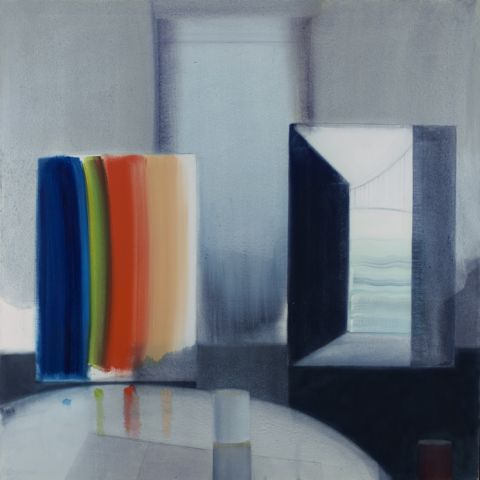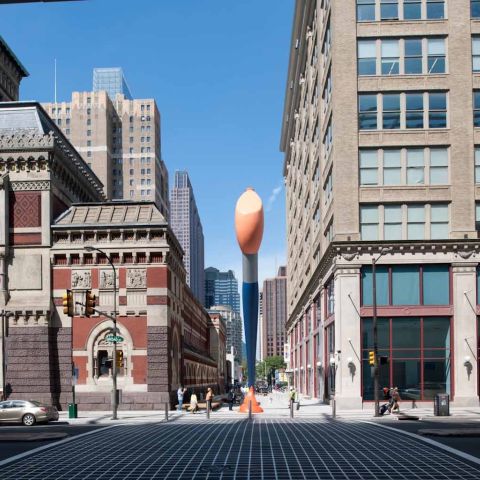Robert Ryman: Philadelphia Prototype
Since 2005, PAFA has been the home to a major late work by Robert Ryman, Philadelphia Prototype 2002. Sited and installed by Ryman in the Samuel M.V. Hamilton Building in close proximity to windows that let in natural light, the work is the culmination of many aspects of Ryman’s practice, from the possibilities of white, faith in materials, exploration of the space around the painting, and the meditative experience of abstraction.
This installation makes connections to works in the PAFA permanent collection that share the artist’s trust in the transformative capacity of the color white and his emphasis on repetition and rigorous structure in Philadelphia Prototype 2002.
Robert Ryman (1930–2019) is widely considered the foremost Minimalist painter in a movement associated more with objects than with paintings. Minimalism implies the modernist goal of distilling art to its formal essence by eliminating illusionistic pictorial space. While Minimalism is often associated with the machine-made, Ryman’s work is distinguished by the importance he places on unique surfaces brought about through the painter’s touch. He uses texture, mark-making, and viscosity as essential elements in a highly-refined examination of the optical and material properties of painting.
Since the 1960s, Ryman has explored the myriad possibilities of the color white by varying the scale, type of paint, surface texture, support, and installation of the work. Ryman has always insisted on the importance of the relationship of the painting to the wall, by either attaching it very closely using unusual anchoring devices, like metal brackets or in the case of PAFA’s permanent installation, Philadelphia Prototype, 2002, using paint itself as a method of attachment.
Philadelphia Prototype, 2002 is a remarkable achievement in Ryman’s career. It consists of ten buff-colored vinyl sheets attached to the wall with white acrylic paint. In the execution of the work, the panels are attached to the wall with multiple pieces of adhesive tape, placed perpendicular to the four edges of each panel. Each panel is then painted white, the brush strokes exceeding the edges by roughly one inch all around, creating a halo or border of pigment on the wall. Finally, the tape is removed, revealing unpainted tabs around the edges and unpainted vertical stripes across the surface of the vinyl. Ultimately, the panels are held to the wall by the adhesive properties of the paint alone. Reducing painting to the pure surface—dispensing with a painting’s “objectness”—has been an ongoing goal for Ryman. With Philadelphia Prototype, 2002, he achieves this on a seamlessly integrated architectural scale.
Explore More Exhibitions
We're so excited you're planning to visit PAFA!
Make time for art — visit us Thursday to Sunday.
Before reserving your tickets, please review helpful information about museum hours, accessibility, building access, and special admission programs.
If you have any questions, feel free to reach out to us at visitorservices@pafa.org — we’d love to help!


